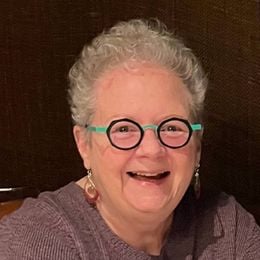Eleven Women Photographers Reveal Our ‘Unfiltered Connection’ to the Natural World
'Seeing It All,' a new book from the California Academy of Sciences, showcases breathtaking images of beauty and of peril
A giant panda appears to play peekaboo, confiscated skins and taxidermied skulls of big cats line repository shelves, stately marine iguanas sun themselves on rocks in the Galapagos Islands and icebergs set adrift from Arctic glaciers are among the images in "Seeing It All: Women Photographers Expose our Planet," a new book co-published by the California Academy of Sciences, located in San Francisco's Golden Gate Park.
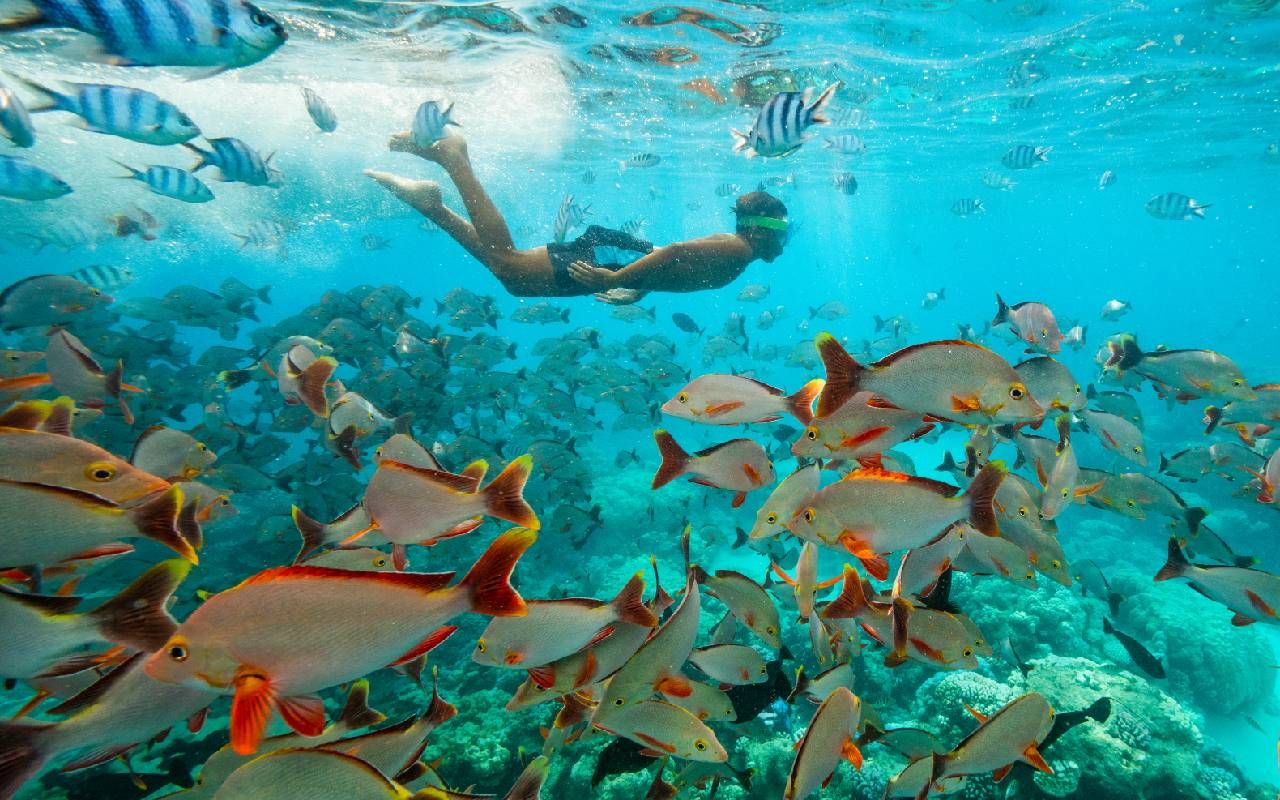
"Saving nature is saving ourselves" is a stated theme of the book, and the 125 images reveal moments of profound beauty and also of peril; of a lot of life and yes, some death. "Every image is a freeze-frame of how we are living together with animals and amidst the natural world in these precarious times," said Rhonda Rubinstein, creative director at the Academy and curator of the book.
"Saving nature is saving ourselves."
"Some images show the best of us, people working to help bring animals back into the wild, and some show the worst, examples of how we are turning animals into consumer products," Rubinstein continued. "As a collection of images and words, the book becomes a more powerful thing of beauty and realization." Each photographer also offered personal manifestos of sorts, sharing their visions for the roles nature photography plays.
The photographers featured in the book are Tui De Roy, Suzi Eszterhas, Daisy Gilardini, Jen Guyton, Morgan Heim, Esther Horvath, Britta Jaschinski, Jo-Anne McArthur, Cristina Mittermeier, Camille Seaman and Ami Vitale. Oceanographer and explorer Sylvia Earle, who called the book "hauntingly beautiful," wrote the foreword. Writer and activist Rebecca Solnit and neuroscientist and science communicator Indre Viskontas penned introductory essays.
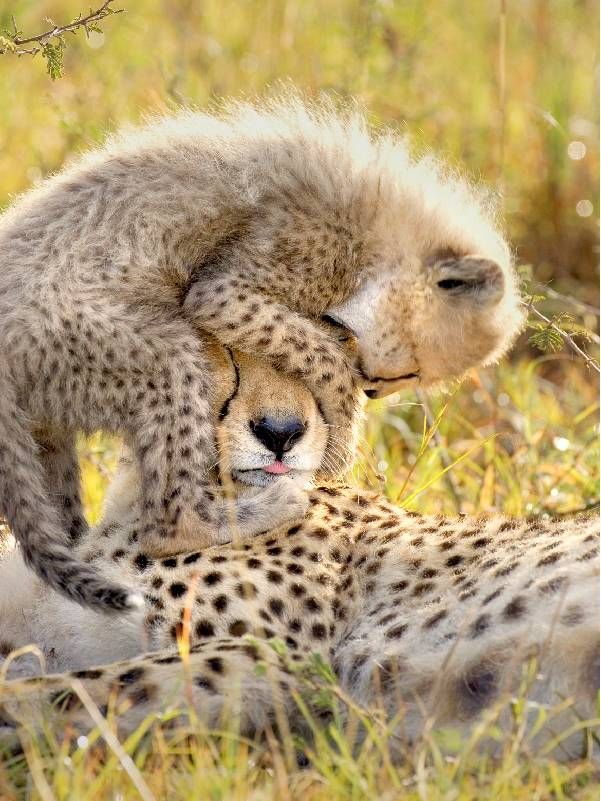
The photos, each well worth lingering over, were made from the Arctic to Antarctica, at the National Wildlife Property Repository in Colorado, in African and Chinese wildlife sanctuaries and on land as well as above and below the sea. A Weddell seal yawns in one photo. In another, a male lion meets his cub. Other baby animals featured include koalas, elephants and a cheetah perched atop its mother's head. People are pictured in the book as well, among them divers exploring watery worlds, workers tending to animals in their care and Indigenous individuals honoring the land.
'We See Our Subjects as Fellow Travelers'
Images of giant tortoises, hammerhead sharks and blue-footed boobies in "Seeing It All" are the work of photographer and writer Tui De Roy, 69, who has documented the wildlife in the Galapagos Islands for more than 50 years. "I try to portray the world not through our eyes, but through the animals' lives, from their perspective," said De Roy. "I want to show them being themselves."
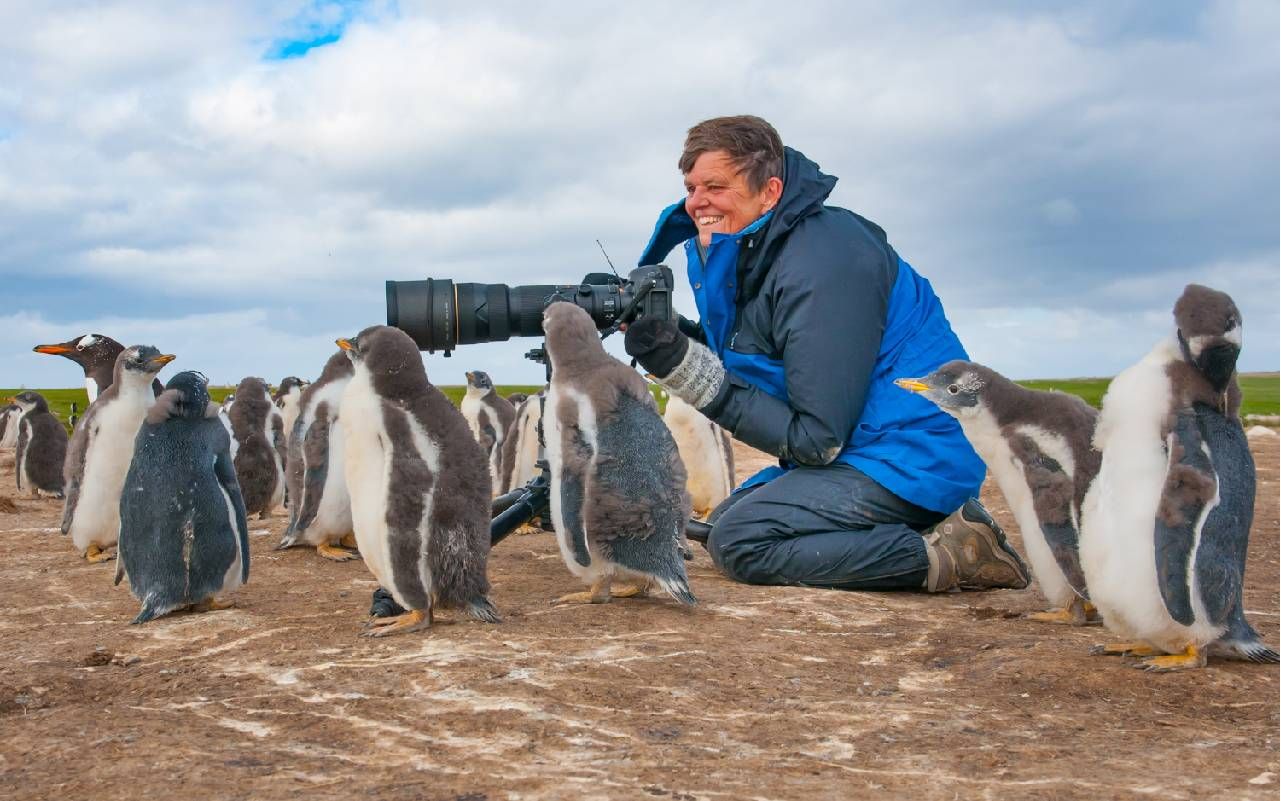
She grew up in the Galapagos, after moving from Belgium at the age of 2 with her parents. (Read more about that extraordinary experience in "A Lifetime in the Galapagos," one of 20 books she has written.) Currently, De Roy lives and works part of the time in the islands and part of the time in New Zealand.
Nature photography requires patience, and De Roy emphasized that she is happiest when alone in the field. "All my life I've been trying to photograph the timelessness of nature," she said. "We live in a 1,000-miles-per-hour world, but time is golden in terms of getting a good photo, because in nature, things happen the way they always have and should — and not interrupted by our speedy lifestyles."

De Roy said she is pleased to be included in a book showcasing women photographers. "I was brought up to be a human being, not to act according to my gender, but I've allowed myself to be convinced that women do portray subjects in the natural world in a different, more sensitive manner," she said. "Photographs by women who connect with nature, who serve as messengers for nature, have a different flavor, because we see our subjects as fellow travelers on this planet."
In the book, De Roy predicts that nature, not humans, will have the last word. "Nature has been diminished by humans in some areas of the globe, but no matter where we look, nature is still there," she wrote. "In the end, only nature will endure. Nature quietly gets on with being, with adjusting, with remaining beautiful. I think that's worth celebrating."
‘A Visual Invitation to Take Action’
Ami Vitale, a former news photographer who lives in Montana, has covered armed conflicts, famines and natural disasters in Afghanistan, Kosovo, Kashmir and beyond. In recent years, she has traveled to more than 100 countries on a mission "to amplify the voices of unsung heroes on the conservation frontline … people all over the world who are taking a stand to protect wild places and the amazing species that live there."
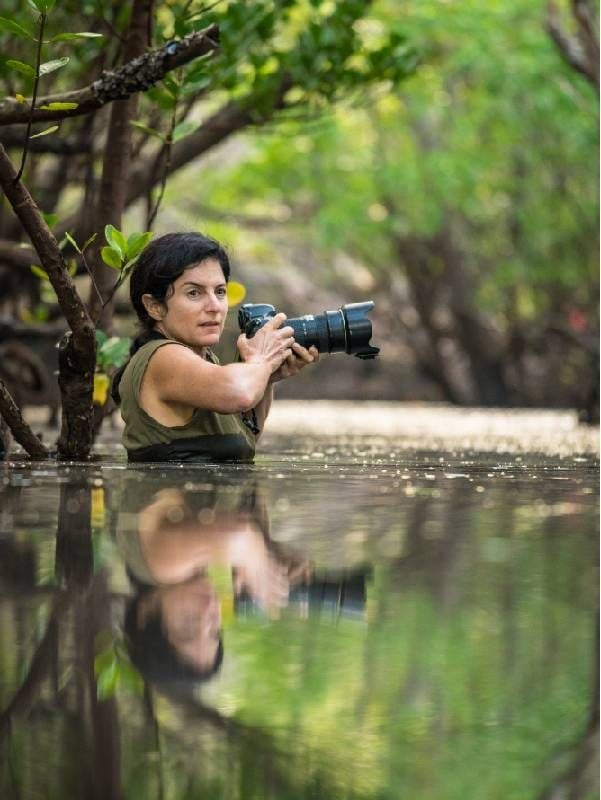
To do that, Vitale has photographed many individuals who are taking action to help save nature, and by extension, save ourselves. "Everywhere I go, I see people, often with very little, making huge impacts in their communities and for the planet …and I think it's important to shed some light on these stories," she said. "And I like to ask if the people in these stories could do so much with just hope, resilience and imagination, what might we all accomplish together?"
Asked whether she agrees with curator Rubinstein's description of the book as "a time capsule," Vitale replied, "I think there is some truth to this. We've wiped out 50% of the Earth's wildlife in the last 40 years. It doesn't take complicated math to figure out if we don't act now, there will be little left. It's not only a time capsule; these images are an unfiltered connection to the natural world and they can stir emotions, foster empathy and cut through the noise of misinformation. This book holds cautionary tales of human impact and is a visual invitation to take action."
Nature Photography Competition Also Triggers Caring
A focus on the value of nature photography is not new at the California Academy of Sciences. Along with Suzi Eszterhas, who is among the photographers featured in "Seeing It All," creative director Rubinstein founded "BigPicture Natural World Photography," an annual international competition and exhibition.
Since its inception in 2014, the competition has received roughly 64,000 submissions and awarded $120,000 in prizes for more than 80 winning images. Categories include Terrestrial Wildlife, Winged Life, Landscapes, Waterscapes and Flora, Aquatic Life, Art of Nature and Human/Nature. Through the years, all the photographers featured in "Seeing It All" have been either winners or jurors.
"Photographers can change how we see the natural world because they present a whole new perspective."
Each year, the winning images are first published in "bioGraphic," the Academy's independent online magazine and the official media sponsor for the photo competition. This year's 49 winning photographs, now on display at the Academy, were selected from more than 7,300 submissions from photographers in 58 countries.
"Photographers can change how we see the natural world because they present a whole new perspective," Rubinstein said. "Paying attention — looking at images in the exhibit or in the new book — is a trigger for caring, and for the urgency of action to protect the essential diversity of life upon which we depend."
